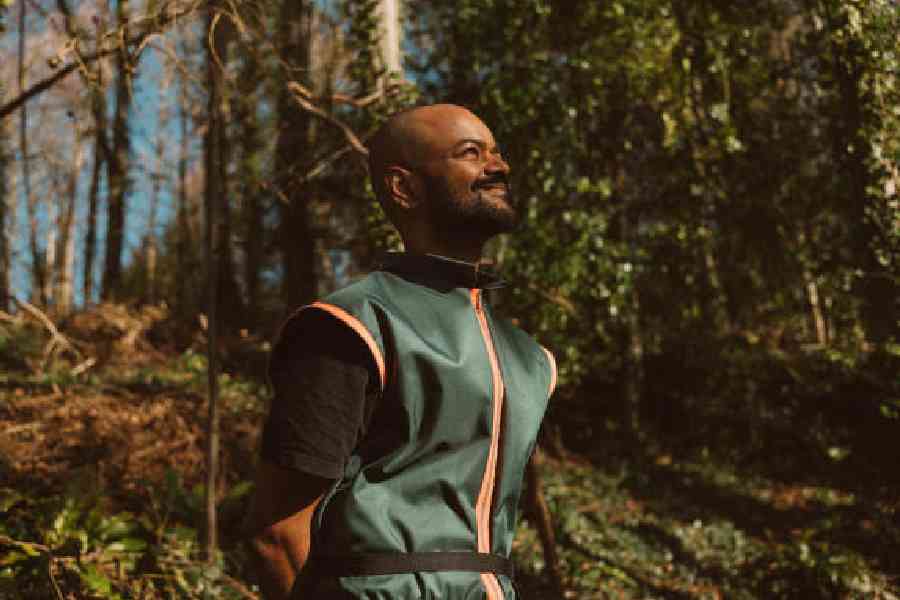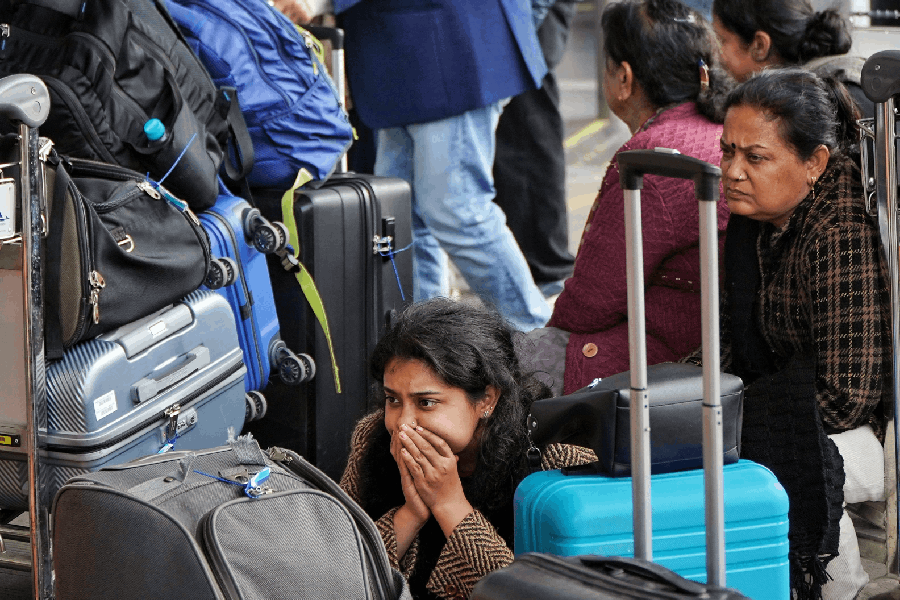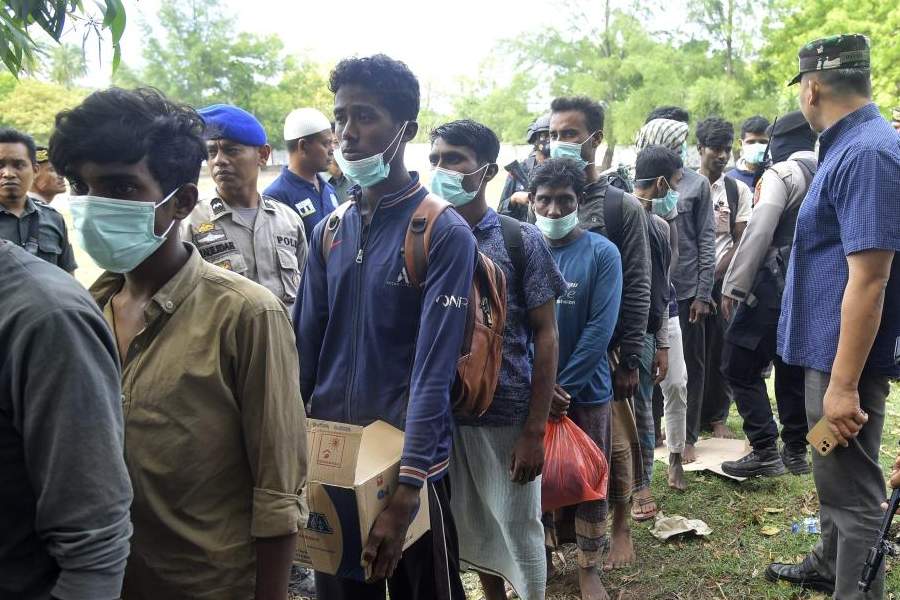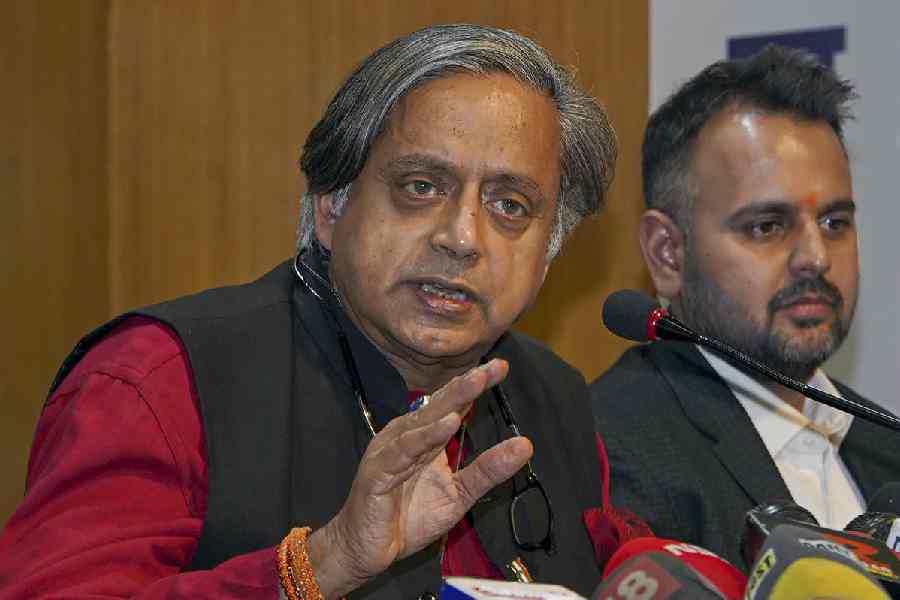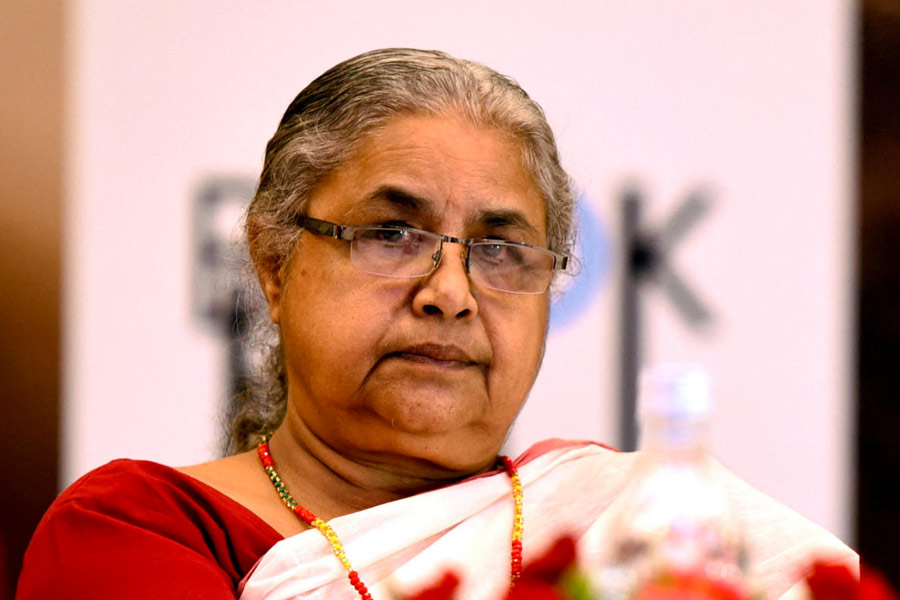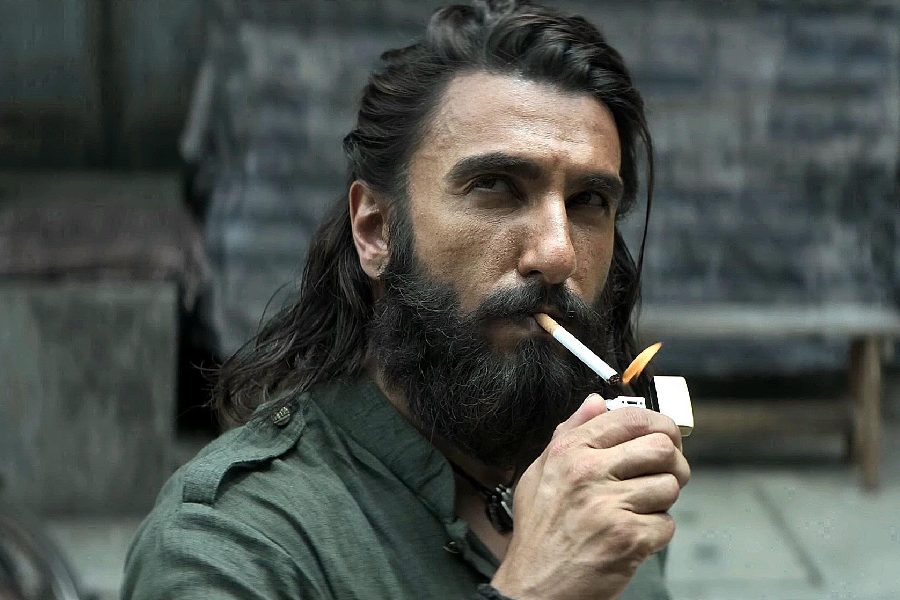Award-winning sarod musician and composer Soumik Datta is back in India with his new immersive show Travellers in which “Indian classical roots meet ambient textures, spoken word, and field recordings”. At its heart is the sarod’s evocative voice, layered with violin, tabla, and percussion to create what Datta calls “ear cinema”.
Travellers is part of Datta’s seven-month-long India tour called ‘Melodies in Slow Motion’, which will take him to all the four corners of the country to perform, collaborate with young musicians, record in unusual spaces, and work with schools and children.
The winner of the 2022 Aga Khan Music Awards fields a few questions from t2.
Travellers brings together refugee cries, news broadcasts from Gaza, and the resonance of the sarod in one soundscape. How did you steer the tension between political urgency and artistic expression while composing something that remains deeply musical?
Over the last few years, my work has been exploring the space between the sheer beauty of Indian classical music and the grim reality of urgent humanitarian issues. Now more than ever, it feels almost impossible to play music for the sake of music without using that stage or that platform to draw attention towards our shared crises.
With Travellers, my intention was to discover a piece that was driven by the urgency of the moment, and our raw, complicit feelings of helplessness and grief. The heartbreaking images of displaced families and the suffering in Gaza created an emotional state that then became the foundation of the music.
At times, the music is jarring; at others, the sarod’s deep, melancholic tones speak to the human spirit’s enduring search for solace. The news broadcasts serve as a harsh, unyielding reminder of our reality, and the cries of the refugees are the raw, unfiltered voice of humanity in its most vulnerable state.
The goal was to create a soundscape that held all of these elements in a single, coherent piece. It was about actively sharing that raw feeling and inviting the listener to feel the same sense of urgency. It’s a piece that doesn’t offer easy answers, but instead asks us to bear witness, to feel, and to confront the uncomfortable truth of what is happening in our world.
You’ve described Travellers as “ear cinema”. Can you share the process of translating visual or narrative storytelling into a sonic form without the audience feeling lost?
I’ve always enjoyed listening to films. There’s a huge amount of information in the score, the foley, and of course, the dialogue. That aural space has always been magical to me but I never thought I would explore it in such depth and detail as we have done in Travellers.
These days, it is almost common practice for musicians to have a screen, a projector and visual backdrops to their live sets. Sometimes those visuals are meaningless and disconnected from the music being played. But still, there is a sort of anxiety and fear of losing the audience if you don’t make your set visually pop.
All this does is overstimulate our audiences. And in an already overstimulated world where you can’t escape 30-foot advertisements and LED screens bombarding you with capitalist messaging, I want my shows to have a different quality. I want people to sit with us, in near darkness, to think, to feel, to use their imaginations to create visuals in their mind and to travel with us through a rainbow of emotional states.
What kind of emotional or sensory journey do you hope the audience experiences and does sound design contribute to that immersion?
Using field recordings and audio clips from real life drives the experience of our show towards the documentary space. Imagine blending a live music concert with a documentary feature film about the humanitarian crisis today. Now take away the video and you’ll come very close to the world of Travellers.
I’m also passionate about sound design and am now beginning to work as a sound designer for artists friends, dancer choreographers and filmmakers. It allows me to approach audio in an organic and messy way. If you look at my audio session sets on my laptop screen, they aren’t neat rows of kik sounds and hi-hats. They are more chaotic with sounds emerging from nowhere and dissolving into something else, like a tree growing out of a building.
What are the possibilities and limits of the sarod in telling contemporary stories?
A series of seemingly unrelated events led to finding the sarod at the age of 12. That could easily have not happened. In another dimension, I might have played the piano instead. And the piano might have been a more suitable instrument to score contemporary themes. But that’s only because Indian classical instruments haven’t been used in that way enough. They’ve been restricted to melodramatic sequences in television series or reserved for the classical stage.
But you only need to listen to the music in Satyajit Ray films or even the sarod in a film like Piku, to see how these instruments and their non-western, non-harmonic, linear, phrase-based melodies can capture the psychology of people living in society today. I hope to keep using the sarod and other Indian instruments to tell contemporary stories about us and our environment.
You’re performing with musicians like Sayee Rakshith, Debjit Patitundi, and Sumesh Narayanan. They come with distinct training. How did you find a shared language within the diversity of classical and cinematic idioms?
I feel incredibly lucky to have found a group of musicians whom I can call friends, collaborators and peers. And I’m deeply inspired when playing or working with Sayee Rakshith, Sumesh Narayanan and Debjit Patitundi. Together we form the quartet at the heart of Travellers.
It’s been so refreshing to meet artists who are both anchored to their tradition and also free to explore the outermost fringes of their instruments. Where we align is in our collective search for new languages.
The tracks in Travellers are unusual. Some lines go from played to spoken to sung. Sometimes we shout out phrases, punctuating the music and our own playing. The pieces erupt with exclamations and theatrical moments that require a lot of concentration from us all. And it is with awe and gratitude that I watch my co-artists on stage with me making this music their own, filling it with richness, dynamics, and their own artistry.
Your compositions use immersive sound design and field recordings alongside traditional instruments. How do you see technology — microphones, digital layering, spatial audio — reshaping the future of Indian classical instruments?
Many Indian classical musicians already experiment with mic placement techniques and pick up mics. This has been going on for a while now. Unfortunately, the main reason for this is that musicians want more volume. They want to play with drummers and in fusion contexts where their instruments aren’t drowned out by bass amps and percussion.
I’ve done that too but now I choose to play in lower volume contexts. That doesn’t mean my music is quiet but it does define the kind of musicians I collaborate with and therefore the nature of the overall sound.
Last year, I partnered with d&b audio to use their Soundscape system to stretch the sound of Indian classical instruments or move various ragas across the room. I’ve also created shows with quadrophonic sound routing samples through custom-made racks on Ableton Live. These have been eye-opening experiences, and I’m now in the process of conducting workshops and sharing these techniques with young musicians in India as part of my tour. I’d love to see more sitar, sarod, bansuri players and vocalists using Ableton Live to explore texture, convolution reverbs, and spatial instead of being focused on volume alone.
With all the political chatter and economic uncertainties around us, do you believe listening to music can be a form of resistance or healing in today’s fractured world?
For me, healing exists in many spaces. I find it in the company of people I love, musicians, friends, artists, and I find it when watching or listening to their work. Something is translated in the exchange between artist and listener, and it fills you in the spot that seemed fragile or broken.
Live music is an ancient and tribal form of gathering that was always used for communal healing. And so for me, I don’t see myself as a performer entertaining an audience. Instead, I welcome them into an experience that we are creating together in that very moment.
What are you listening to at the moment and what’s the album you revisit time and again when you are feeling anxious?
I’ve just discovered the work of Jacob Alon and loving it. The albums I come back to again and again are In Rainbows by Radiohead and Beyond the Sky by Ustad Amjad Ali Khan and Ustad Zakir Hussain.

